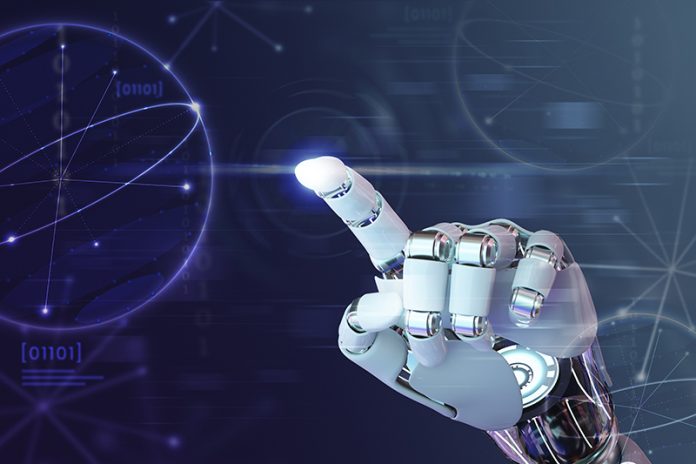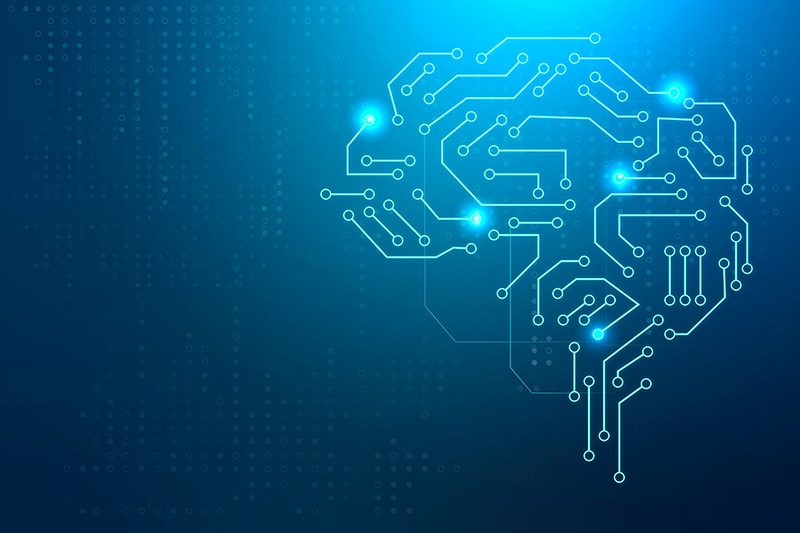
Perhaps we are no longer strangers to the terms Artificial Intelligence (AI) and Machine Learning (ML). These two terms have been increasingly used in recent years due to their impact on various industries ever since the digital transformation and the 4.0 revolution have taken place. Despite their increasing presence in our daily lives, many people still use these terms interchangeably. There are still many misconceptions about the two terms and their differences. However, there are significant differences between AI and ML that should not be overlooked. Let’s make them clear in this post.
For Newbies, What Is Artificial Intelligence (AI)?
Even the novice among us has a vague idea of what AI is, especially when ChatGPT – a machine learning model by the AI service provider OpenAI – has become the center of media attention.
Artificial Intelligence, widely known as AI, is how experts conceptualize the process of machines simulating human intelligence. These processes include learning, reasoning, problem-solving, perception, and language understanding.
In simpler terms, AI is a branch of computer science that aims to create systems capable of handling tasks that would normally require human intelligence. This includes things like recognizing speech, understanding natural language, identifying images, and making decisions. AI can be separated into two main types:
- Narrow AI: These systems are built to carry out specific tasks such as voice recognition, recommendation systems, or image recognition. They are programmed to do a single task and cannot perform tasks beyond what they’re programmed for. Examples of Narrow AI include Siri, Alexa, and Google Assistant.
- General AI: These possess the ability to understand, learn, adapt, and implement knowledge in different domains. This type of AI has the potential to handle or even outperform any intellectual tasks that a human being can do. However, this level of AI currently exists only in theory and not in practice.
What Is Machine Learning?

Simply put, machine learning (ML) is a subset of AI that involves teaching machines to study data and improve over time without explicit programming. Instead of being explicitly programmed to perform a certain task, ML algorithms use algorithms and statistical models to detect patterns in data and make predictions or decisions.
In other words, ML uses algorithms and statistical models to enable computers to learn from experience (data) and perform specific tasks without being explicitly programmed to do so. This makes it a powerful tool for various applications, from self-driving cars to personalized recommendations on streaming services.
Machine learning algorithms are known for three different types:
- Supervised Learning: In this type, algorithms learn from labeled data. After being exposed to a number of examples, the system should be able to label new, unseen data. Common applications of supervised learning include predicting house prices based on different features or classifying emails as spam or not spam.
- Unsupervised Learning: This type involves training an algorithm with unlabeled data. The system must find patterns and relationships within the data on its own. Common applications of unsupervised learning include clustering customers into segments for marketing or detecting anomalous behavior in credit card transactions.
- Reinforcement Learning: Here, an agent learns how to behave in a specific environment by performing certain actions and observing the results. The goal is to learn a series of actions that maximize the final reward. It’s often used in robotics, gaming, and navigation.
ML is increasingly used in a variety of industries and has become an integral part of various aspects of life. It powers recommendation systems in streaming services, voice assistants like Siri or Alexa, email spam filters, and much more.
Are They the Same? Here Are the Differences Between AI and Machine Learning
These two terms are connected, but they are not interchangeable like most people think. Here are some main differences between AI and ML:
- Conceptual Difference: As mentioned earlier, AI refers to the machines’ simulation of human intelligence. This includes fields like natural language processing, computer vision, robotics, and more. Machine learning is just one approach used in AI.
- Learning & Adaptability: Traditional AI systems are programmed to execute tasks, and their behavior doesn’t change over time. On the other hand, ML models have the ability to learn and refine from experience without being explicitly programmed. While current AI systems are designed for specific tasks, Artificial General Intelligence (AGI) aims to develop machines with the ability to perform any intellectual task that a human can, marking a significant leap in the field of AI.
- Data Usage: AI uses algorithms to automate tasks normally requiring human intelligence, while ML is a methodology of training algorithms to learn how to make decisions. In ML, algorithms are exposed to large amounts of data, and they use statistical methods to improve over time.
- Decision Making: AI involves creating systems that mimic or replicate human behavior. ML, on the other hand, involves creating and using models that learn from data and make predictions or decisions based on it.
- Implementation: AI can be implemented in a rule-based, traditional manner or through machine learning, while ML involves providing data to machine learning algorithms to learn from.
- Goal: The goal of AI is to create systems that can function intelligently and independently. ML’s goal is to enable machines to learn from data so they can give accurate outputs based on what they have learned.
In essence, all machine learning is AI, but not all AI uses machine learning. AI is the grand vision, while ML is the practical approach within our grasp that’s bringing us closer to achieving this vision.
Conclusion
In conclusion, AI and ML are not the same. They are related concepts, but they have different applications, methods, and goals. While AI aims to simulate human intelligence processes, ML focuses on enabling machines to learn and improve from data without explicit programming. Both have their own strengths and limitations and are continuously evolving as technology advances. Understanding their differences is crucial in order to fully grasp their potential and impact on our daily lives. As we continue to rely more on technology, it is important to have a clear understanding of these terms and how they work together in shaping the future. So, let’s keep learning and exploring the possibilities of AI and ML.


































